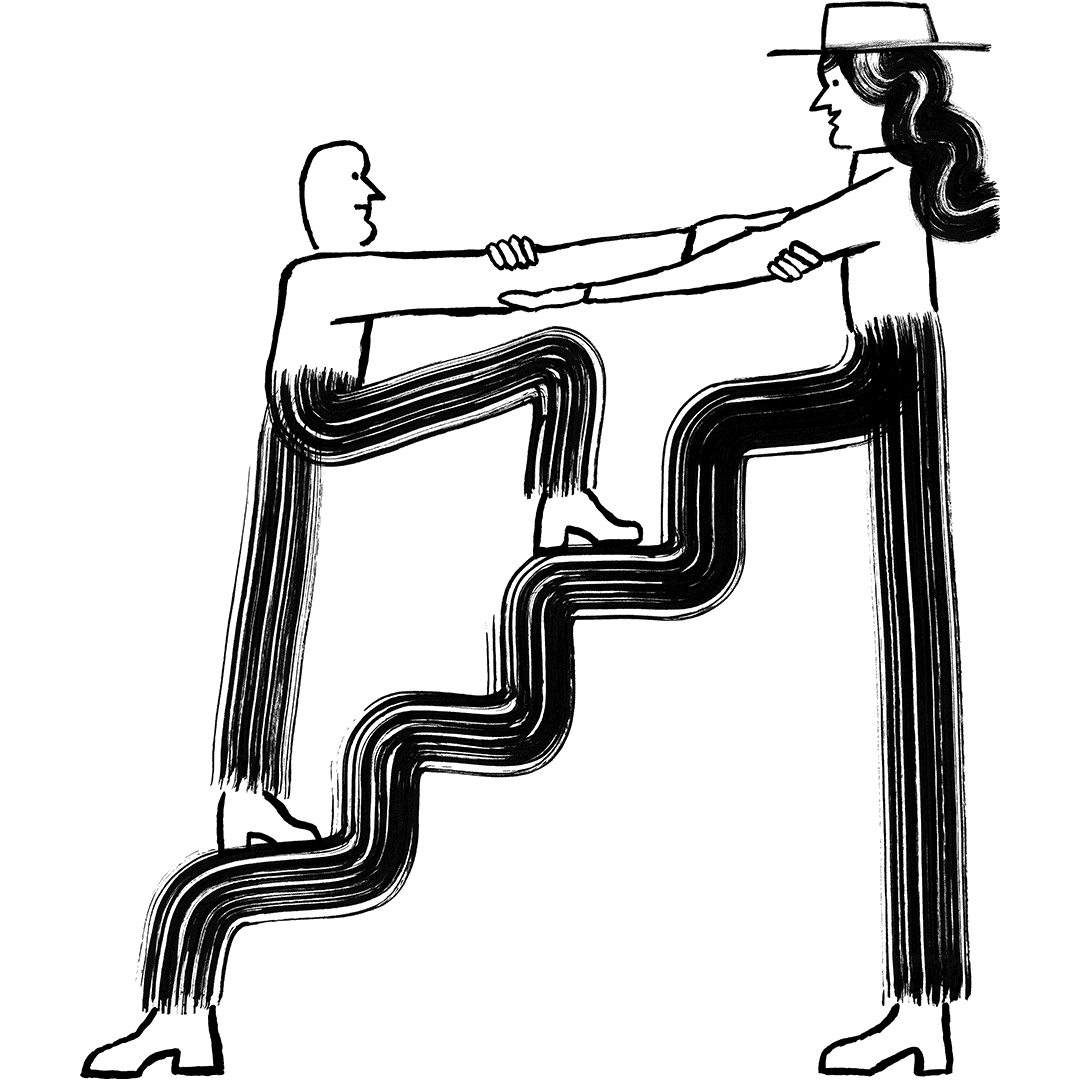Create a Customer Journey
Use Customer Journeys to automatically send targeted emails, tag contacts, and accomplish other important tasks.

Get the job done with a pro
From training to full-service marketing, our community of partners can help you make things happen.
Mailchimp’s Customer Journey feature helps you build dynamic, automated marketing paths for your contacts. Create a journey map with multiple starting points, branches, and unique actions so each of your contacts has a personalized experience.
In this article, you’ll learn about Customer Journeys.
Here are some terms you'll come across as you build your Customer Journey.
A Customer Journey is composed of specific starting points, actions, and rules that you set based on your marketing goals. To build your journey, you’ll choose and arrange these elements on a Customer Journey map.

After you design and activate your map, any contact who matches a starting point condition will begin their journey. When a contact reaches a journey point action or rule, we automatically do the “work” for you.
For example, let's say you create a map that includes the starting point “signs up,” the rule “delay for 1 week,” and the action “send email.” This means that any contact who signs up to your audience after you activate your journey map will receive an email after 1 week.
A starting point is an event or action that adds a contact to a Customer Journey. When you create a new Customer Journey map from scratch, the first thing you’ll do is choose a starting point. To learn about the different starting points, check out All the Starting Points.

If you have a Mailchimp Standard plan or higher, your journey map can have up to 3 starting points. For example, you could have one starting point that adds contacts who are added to a specific group, and another starting point that adds contacts who buy a certain product. If a contact meets either condition, they’ll be added to the journey.
Add a filter
When you add a starting point, you can configure it further with a filter. Filters let you be more specific about who will start a journey. Add up to 5 filters to add contacts that best fit your Customer Journey’s purpose.
After you choose your starting points, you’ll then add journey points. These are the rules and actions that do all the “work” in your workflow.

If you have an Essentials plan, you can add up to 4 journey points to your map. If you have a Standard plan or higher, you can add up to 200 journey points.
Here are the different types of journey points.
| Journey point | Type | Description |
|---|---|---|
| If / Else | Rule | Splits contacts down one of two branching paths based on up to 5 conditions you choose. This starting point is included with the Standard plan or higher. |
| Percentage split | Rule | Divides contacts between two separate journey paths. This starting point is included with the Standard plan or higher. |
| Wait for Trigger | Rule | Prevents contacts from continuing down the path until they meet a condition that you choose. You can include up to 10 wait rules in one journey map. |
| Time delay | Rule | Prevents contacts from continuing down the path for a period of time that you choose. |
| Send email | Action | Sends your contacts an email that you design. |
| Send email with a survey | Action | Sends your contacts an email with a Mailchimp survey that you design. |
| Send SMS | Action | Sends your contacts an SMS message that you create. SMS Marketing is available as an add-on with the Standard plan or higher. |
| Group/Ungroup | Action | Adds contacts to a group or removes them from it. |
| Tag/Untag | Action | Adds a tag to contacts or removes it. |
| Unsubscribe | Action | Unsubscribes contacts from your email marketing. |
| Update contact | Action | Updates or deletes data from an audience field in the contact's record. |
| Archive contact | Action | Archives contacts from your audience's contact table. |
| Webhook | Action | Syncs Mailchimp activity with a third-party app. This starting point is included with the Standard plan or higher. |
| Meta Custom Audience | Action | Adds Mailchimp contacts to your Meta Custom Audience or removes them from it. This starting point is included with the Standard plan or higher. |
To add a journey point, click and drag rules and actions from the side panel onto your journey map. Or, use the plus icon (+) on the map, then select the rule or action you want to add.
The Customer Journeys page is where you’ll create, view, and manage your Customer Journeys and other automations. To access this page, click Automations, then choose Overview. We’ll show you some of your recent Customer Journeys, and some of our pre-built journeys.

To look at all of your Journeys, click View My Journeys. The My Journeys page displays all of your Journeys in the Customer Journeys tab. Use the drop-downs to filter by Audience, Status, or Objective.
If you’ve built any single-email automations or classic automations, you’ll also see them on this page in the Classic Automations tab.

We display a label to indicate your journey or automation status, so you can quickly tell whether things are working as expected. Here are the possible status conditions for a customer journey.
| Status | Description |
|---|---|
| Draft | Your Customer Journey hasn't started. |
| Active | Your Customer Journey is live, and contacts are moving through it as they meet the conditions you’ve set. To edit your journey, you'll need to pause it first. |
| Paused | Your Customer Journey is paused. Contacts will not be added to the workflow and those already within it will not move forward until the Journey is once again set to Active. |
If you don’t yet have a specific plan in mind for your contacts, check out our pre-built journey maps for email and SMS. Navigate to the Customer Journeys page to see some of our options. Click See all pre-built journeys to view all the available pre-built journeys.

Our pre-built journey maps include default starting points, rules, and actions to help you get started. You can customize the map you choose to fit your marketing needs.
Now that you know how Customer Journeys work, take a look at these resources to get started with your own.
Technical Support

Have a question?
Paid users can log in to access email and chat support.
Use Customer Journeys to automatically send targeted emails, tag contacts, and accomplish other important tasks.
Learn about the starting points you can use to add contacts to your customer journeys.